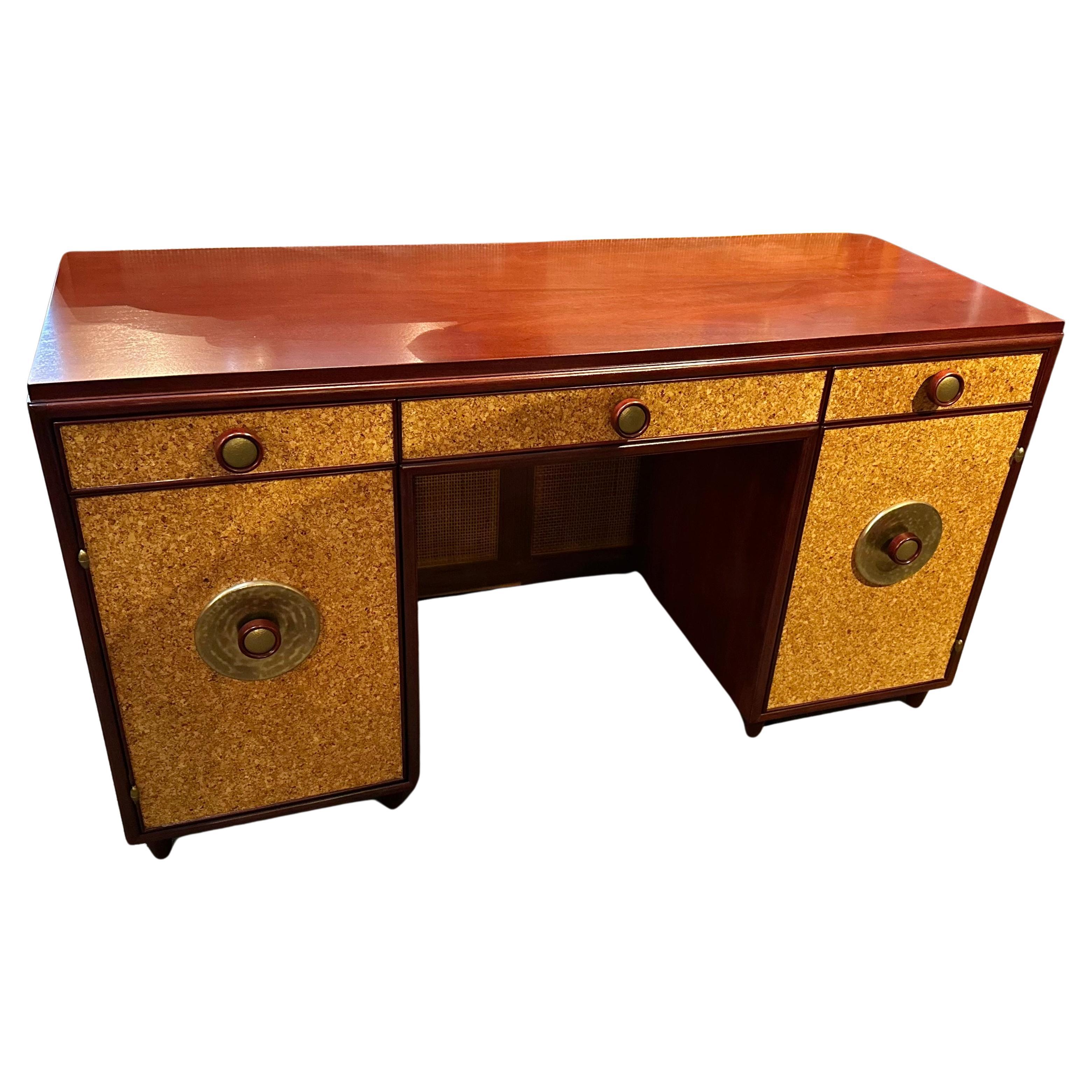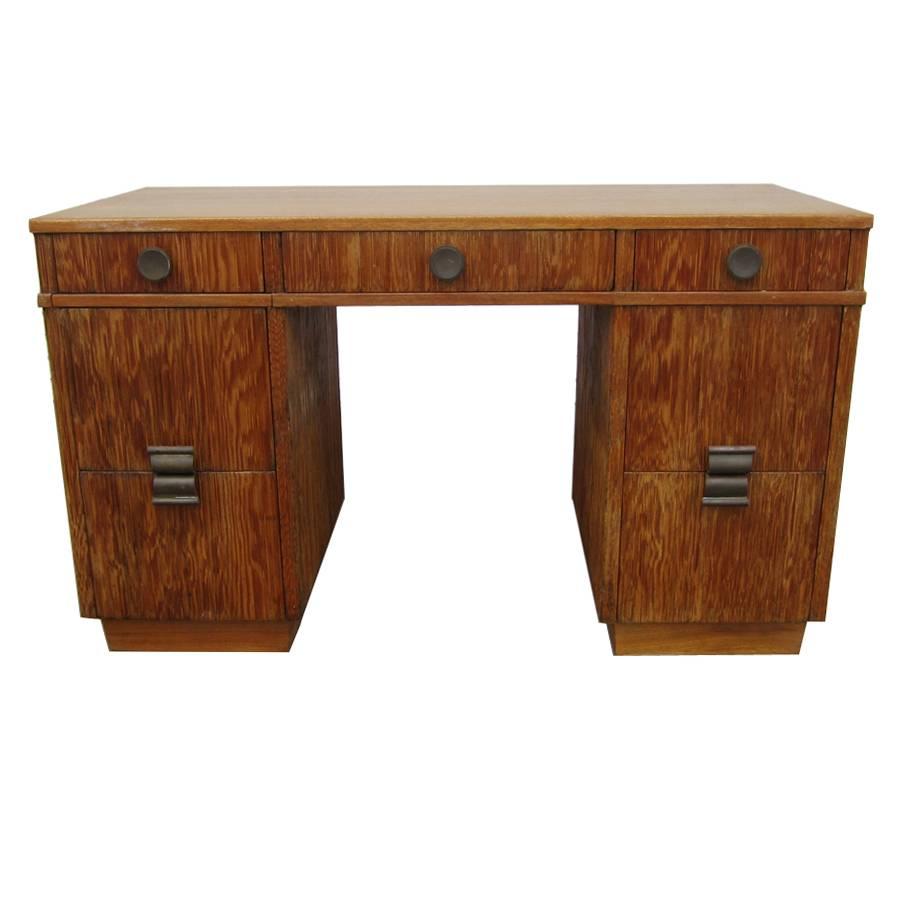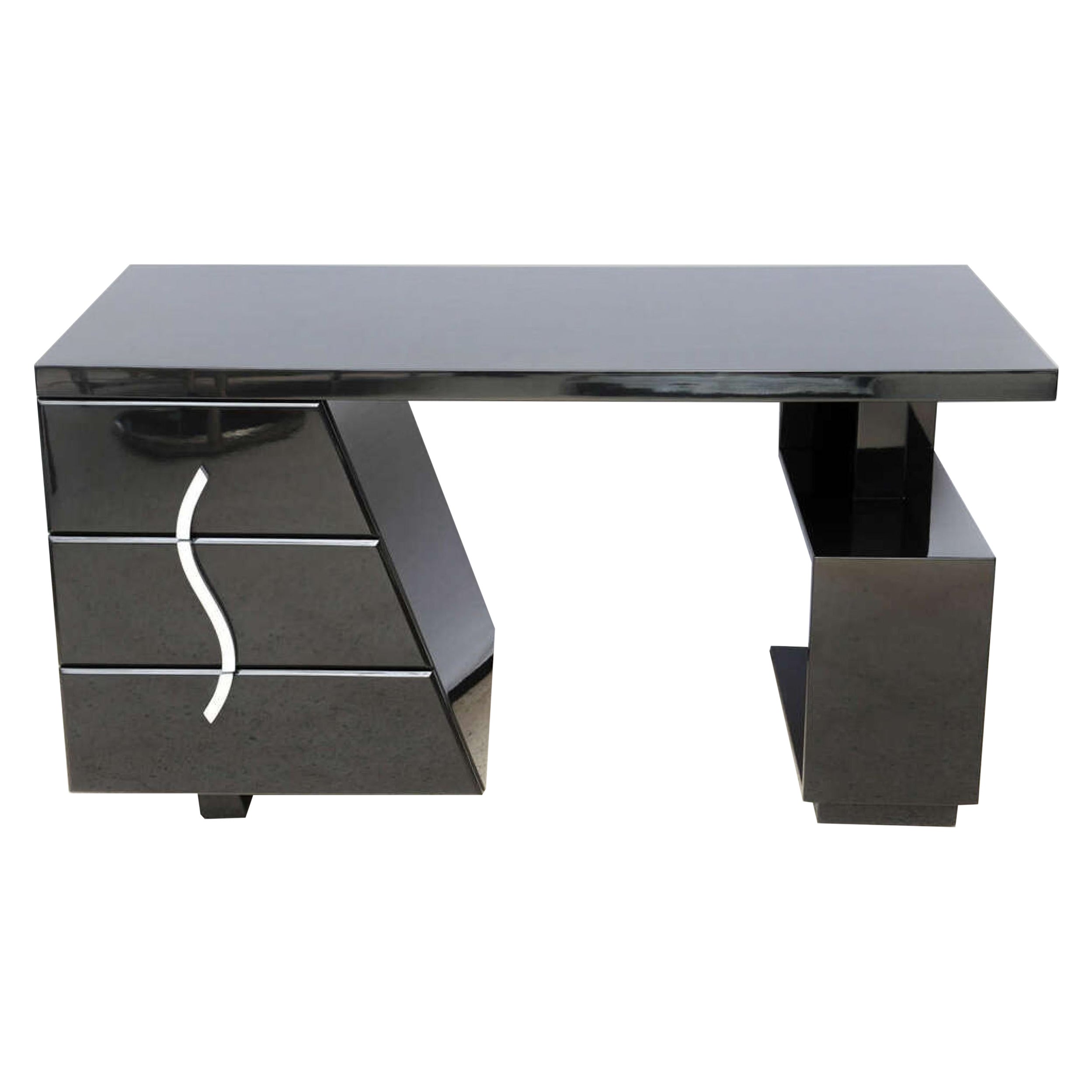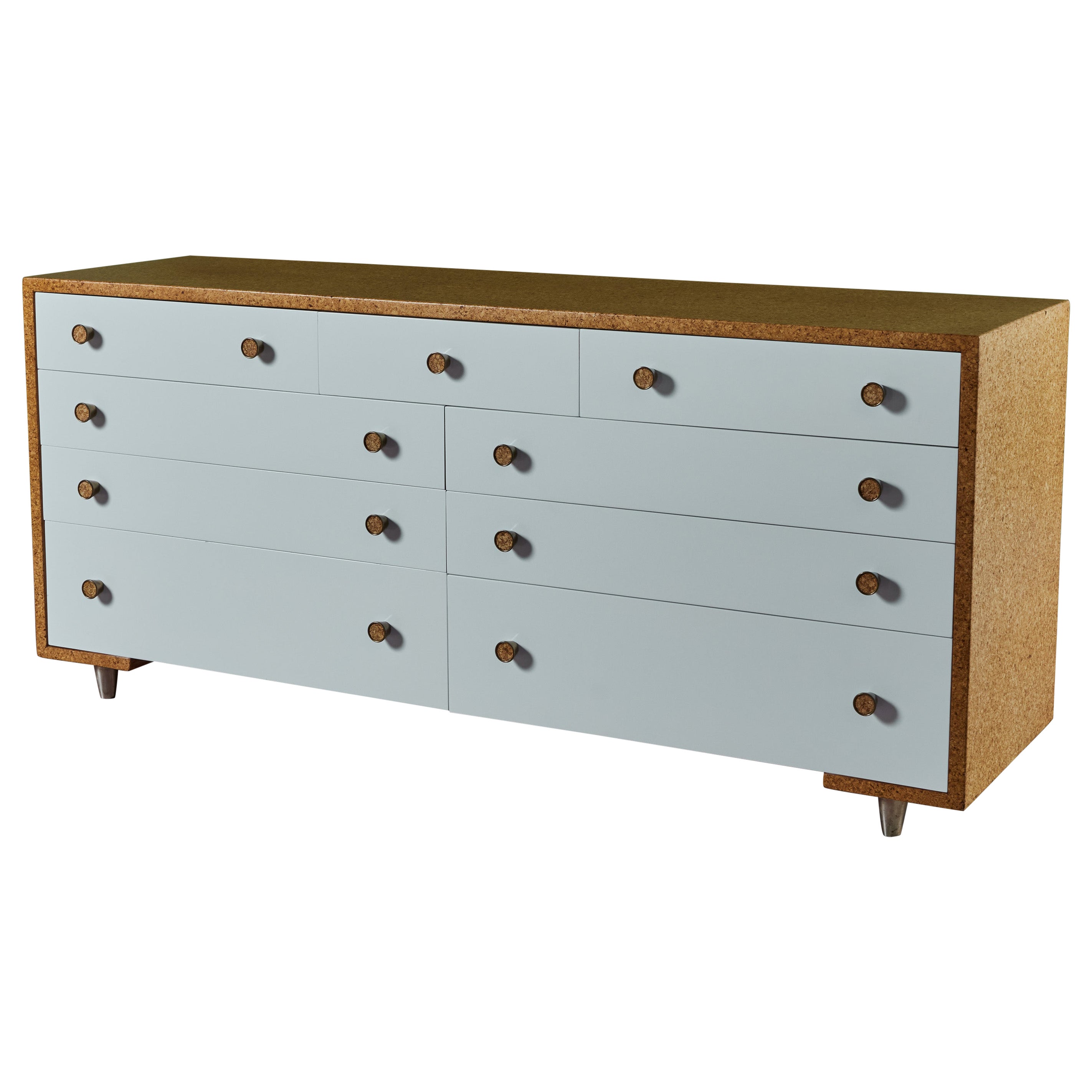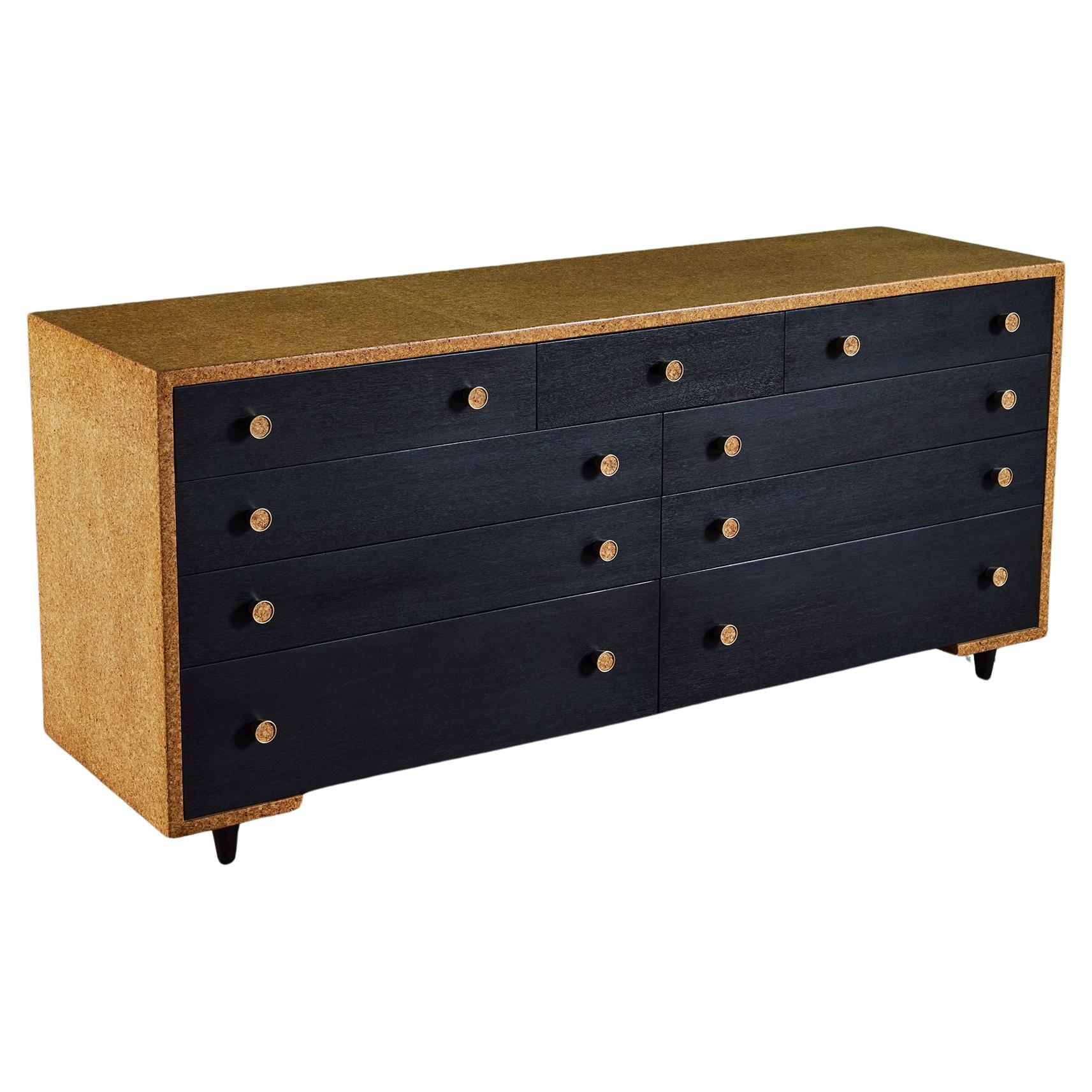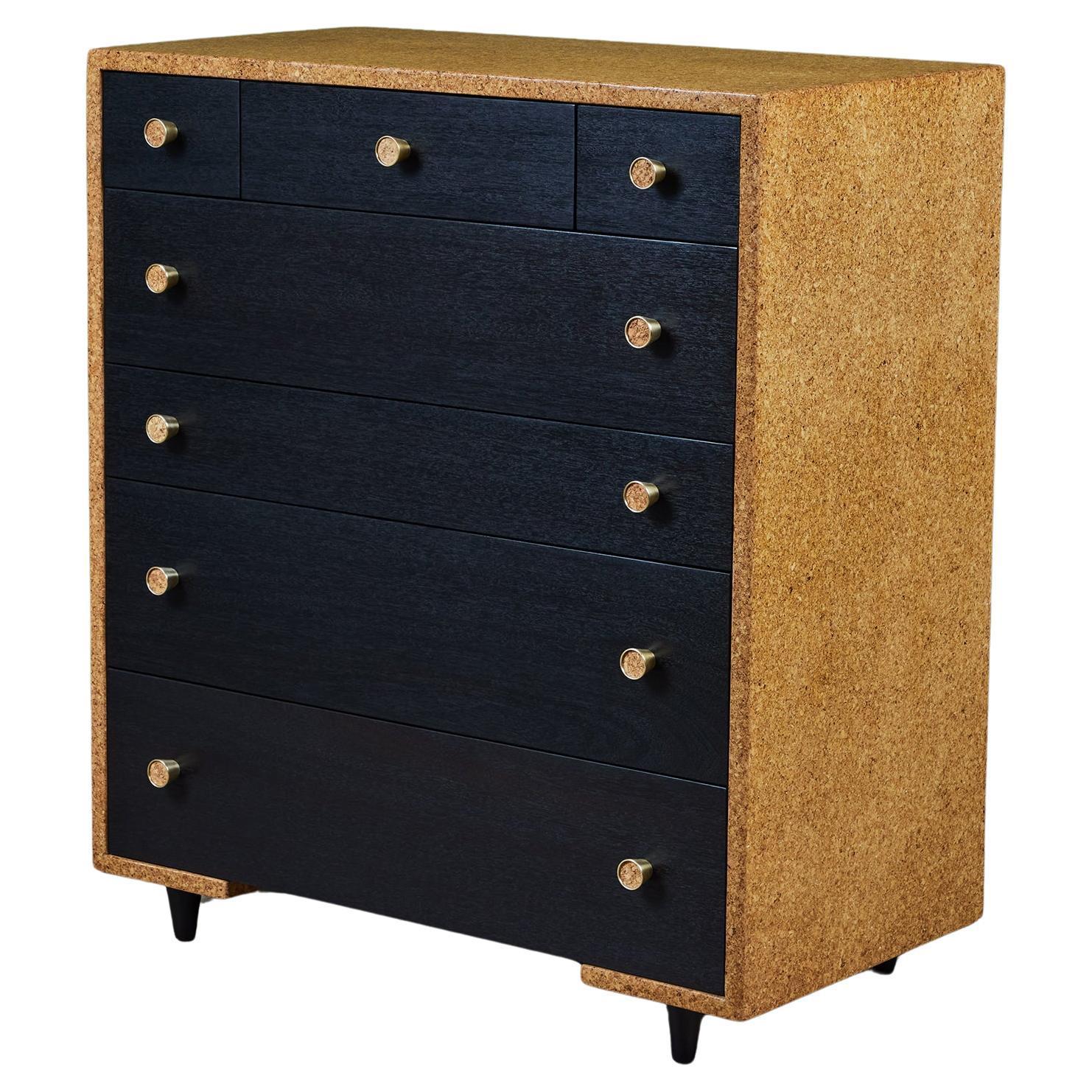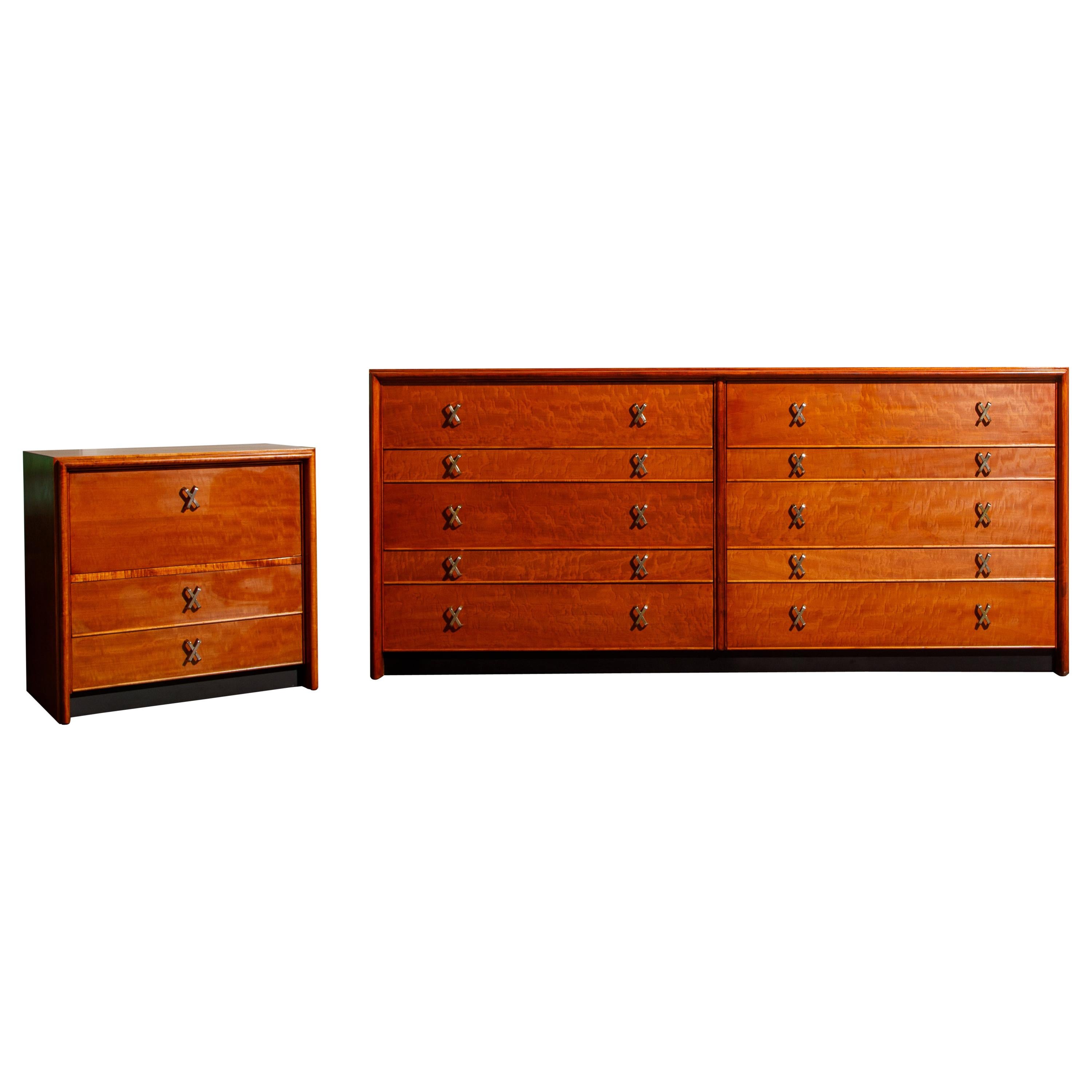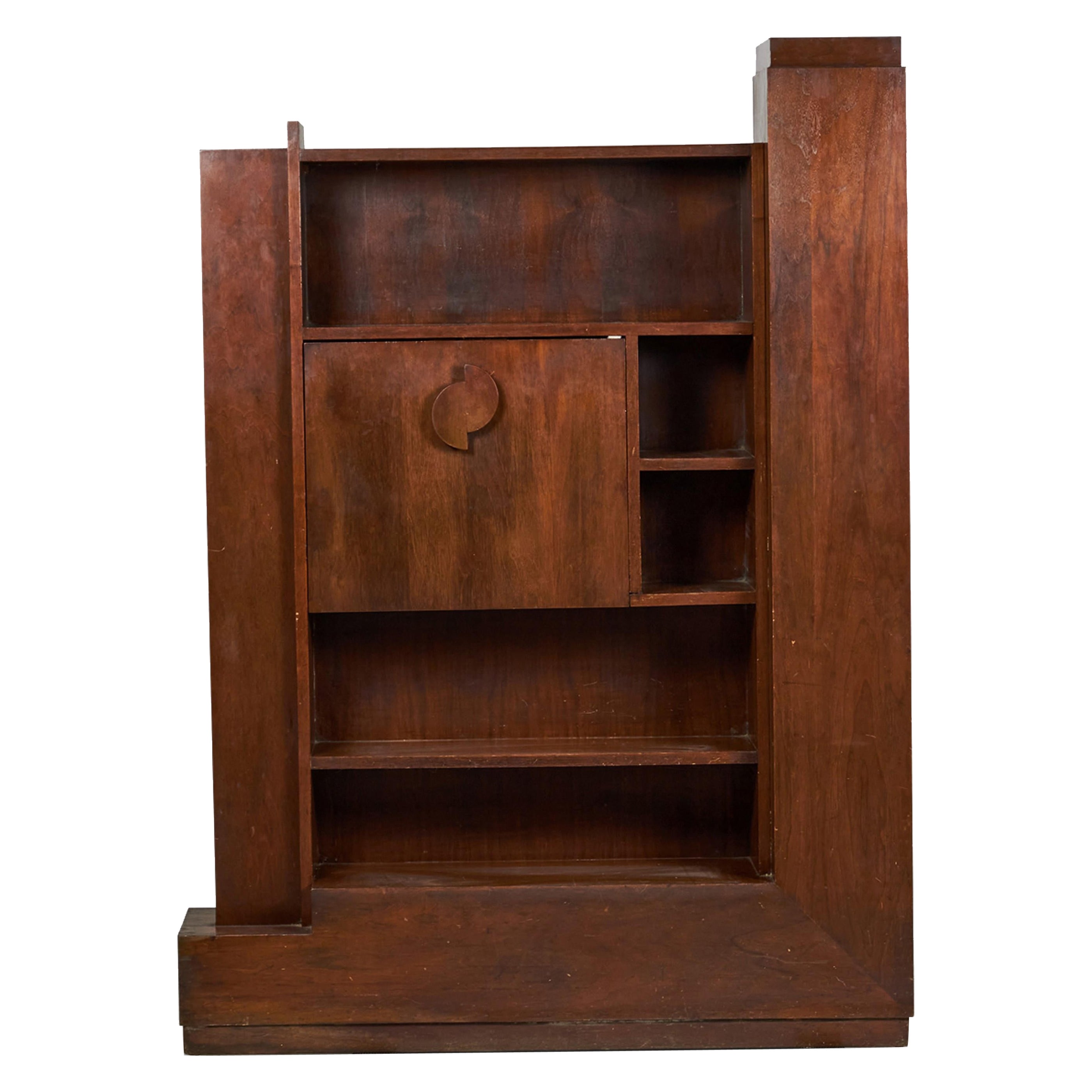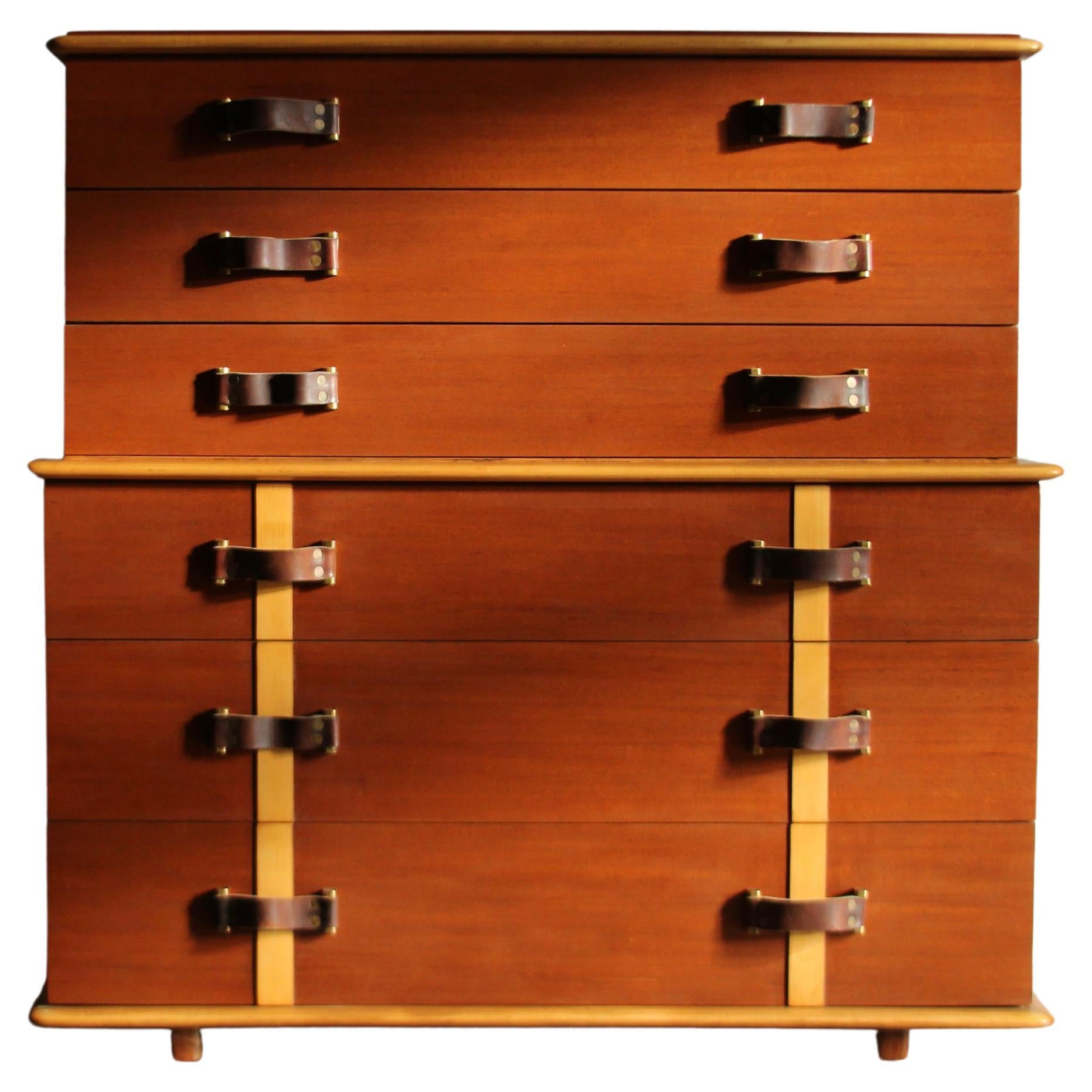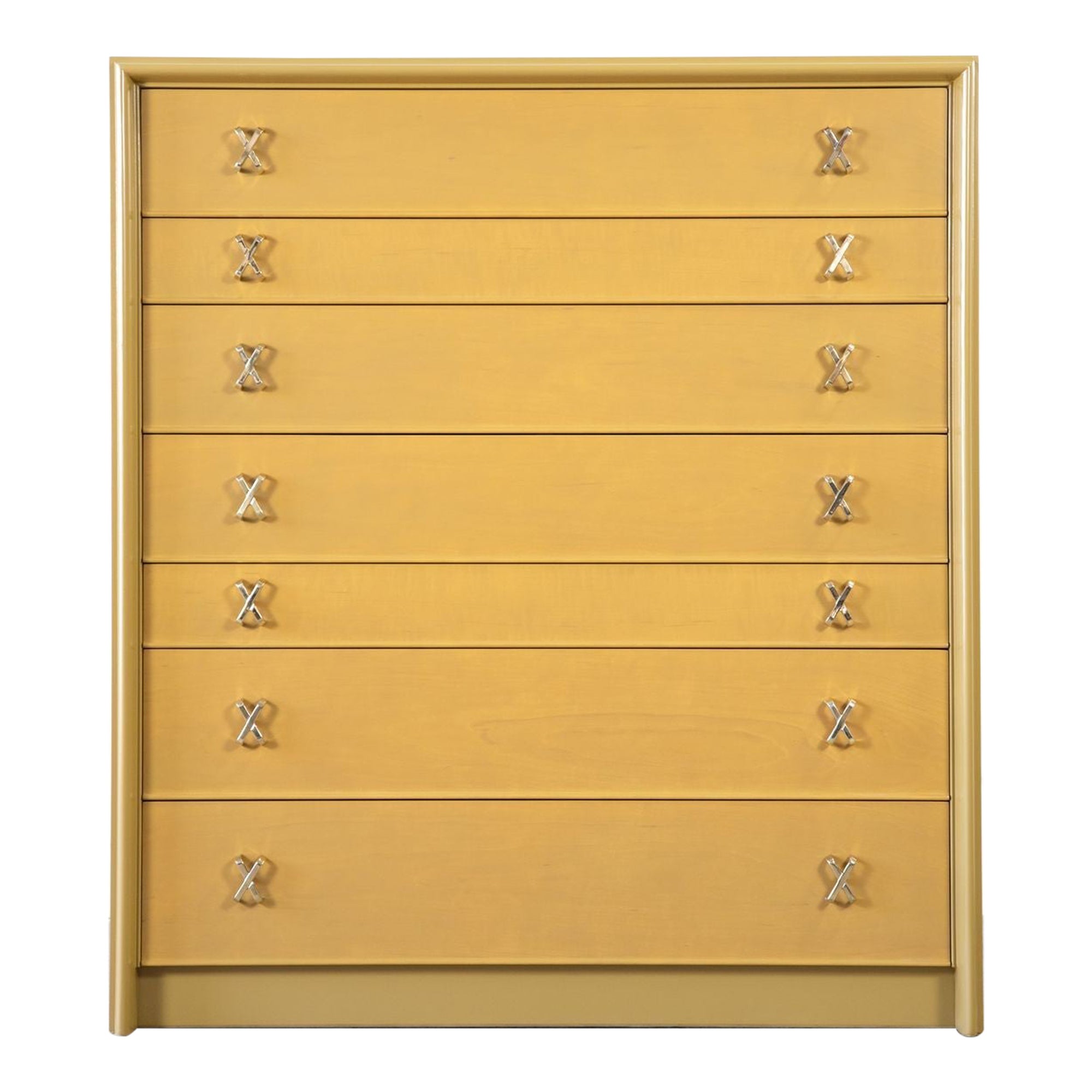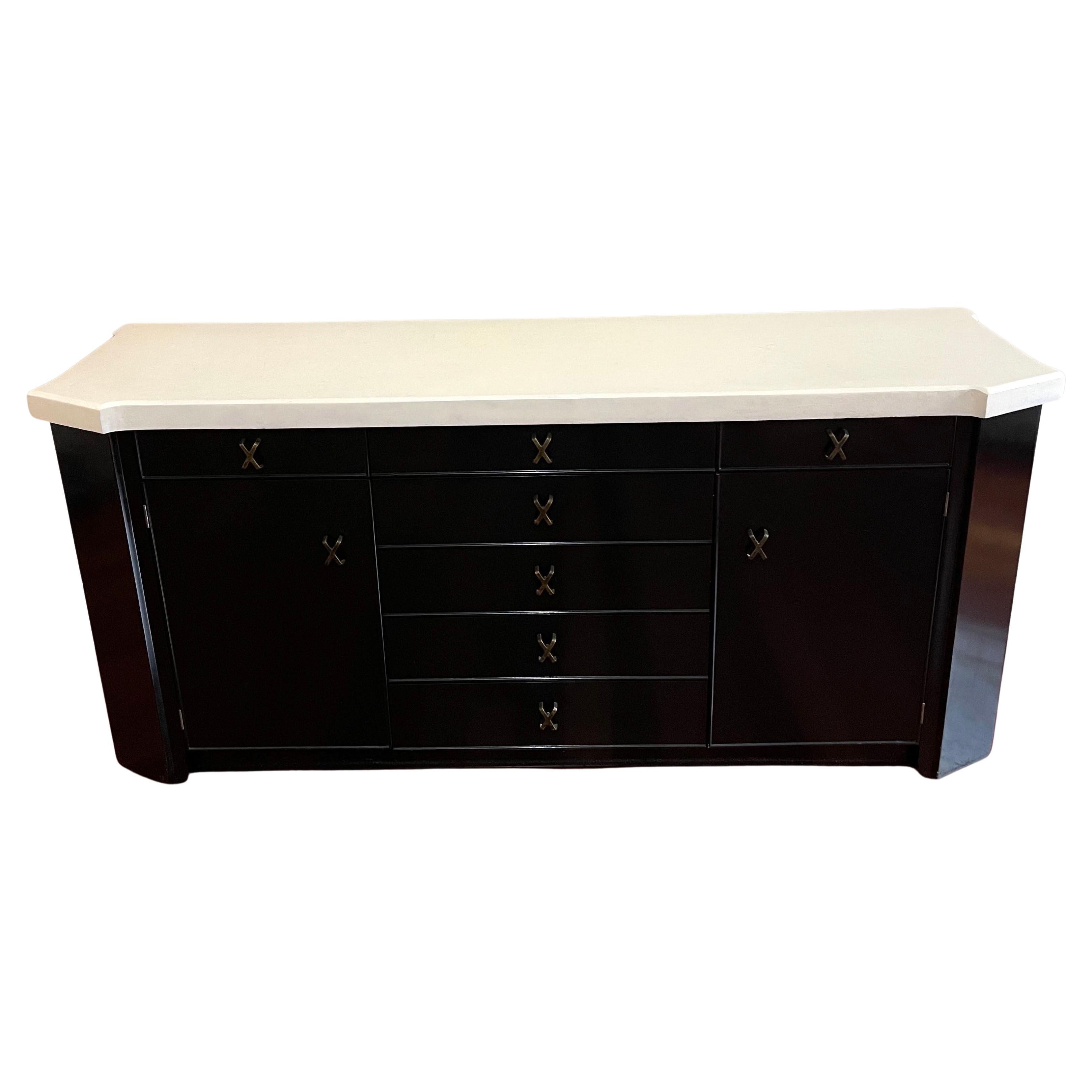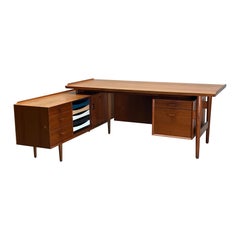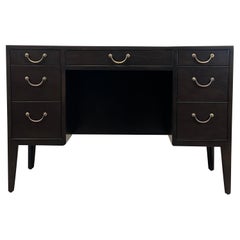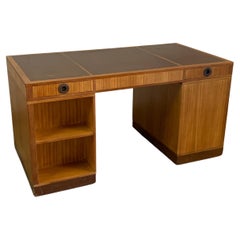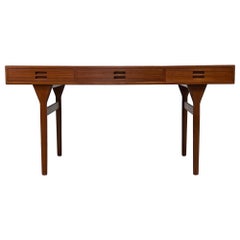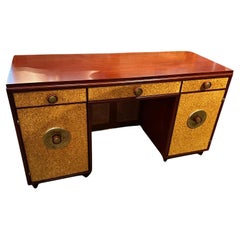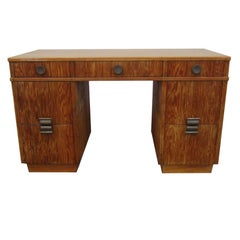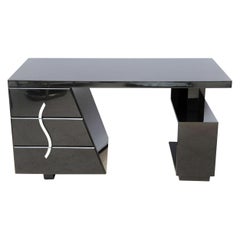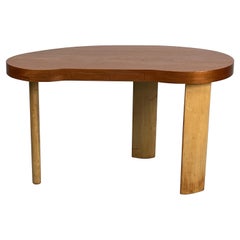
Paul Frankl Kinney Desk for Johnson Furniture
View Similar Items
Paul Frankl Kinney Desk for Johnson Furniture
About the Item
- Creator:Paul Frankl (Designer)
- Dimensions:Height: 28.5 in (72.39 cm)Width: 48 in (121.92 cm)Depth: 24 in (60.96 cm)
- Materials and Techniques:
- Period:
- Date of Manufacture:1940s
- Condition:Refinished. Very good refinished condition.
- Seller Location:Dallas, TX
- Reference Number:1stDibs: LU851839821392
Paul Frankl
Born in Vienna, Paul Frankl came to the United States in 1914 as part of a wave of Central European design luminaries — among them Kem Weber, Rudolph Schindler, and Richard Neutra — who were drawn by the energy and optimism of the American scene. Prolific and protean, Frankl would go on to design furnishings that are emblematic of nearly every key stylistic chord in American modernism, from the streamlined Art Deco to free-form organic shapes.
Frankl's Skyscraper cabinets, bookcases and more — introduced in 1924 — are his earliest and best-known designs (and the work by which he is most often represented in institutions, such as New York’s Metropolitan Museum of Art). Tall and narrow, the pieces have staggered shelves meant to mimic the setbacks of Manhattan office towers. A later visually expressive line — the Speed chairs and sofas, which have a raked profile suggesting motion — links Frankl to Donald Deskey, Raymond Loewy and other creators of Streamline Moderne design.
Frankl moved to Los Angeles in 1934 and luxuriated in the climate and lifestyle. His designs became lighter and simpler and found an audience among the Hollywood élite. (Katharine Hepburn, Cary Grant and Fred Astaire were clients.) Fascinated by Asian arts, Frankl produced numerous pieces — tabletops with edges that curve upward; sofas, chairs and other seating with rattan frames — inspired by Chinese and Japanese forms and materials. In the 1940s, Frankl became one of the first designers to incorporate free-form, biomorphic shapes in his work, as well as novel upholstery fabrics such as denim and nubby wool.
Frankl biographer Christopher Long argues that the designer’s easy, elegant aesthetic had an enormous influence on movie set design. As the furniture below attests, Paul Frankl’s work is ready for its close-up.
Find vintage Paul Frankl tables, dining chairs, case pieces and storage cabinets on 1stDibs.
More From This Seller
View AllVintage 1960s Desks
Teak
Vintage 1950s Desks
Mahogany
Vintage 1950s Desks
Mahogany
Vintage 1950s Desks
Teak
Vintage 1950s Desks
Teak
Vintage 1970s Desks
Oak, Rosewood
You May Also Like
Vintage 1950s American Mid-Century Modern Desks
Brass
Early 20th Century American Mid-Century Modern Desks
Wood
20th Century American Mid-Century Modern Desks
Lacquer
Mid-20th Century American Mid-Century Modern Dressers
Brass
Mid-20th Century American Mid-Century Modern Dressers
Brass
Mid-20th Century American Mid-Century Modern Credenzas
Brass
Recently Viewed
View AllRead More
How to Work Rattan and Wicker Furniture into Any Space
Interior designers Celerie Kemble and Angie Hranowsky dish out their advice on artfully bringing these natural materials into today's homes.
Kaleidoscopic Upholstery Makes This Edward Wormley Chair a Showstopper
What at first glance seems an unusual choice jibes perfectly with the designer's aesthetic.
